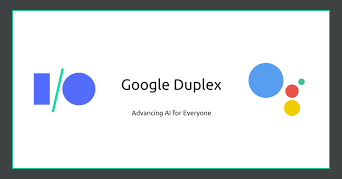Best Mind-Blowing Artificial Intelligence Tools – Artificial Intelligence (AI) is revolutionizing the way we live and work.
From smart assistants like Siri and Alexa to self-driving cars, AI is making incredible advancements.
There are many amazing AI tools and applications that showcase the true potential of this technology.
Best Mind-Blowing Artificial Intelligence Tools
Here are the top 10 most mind-blowing AI tools that exist today:
1. Google Duplex
Google Duplex is an AI system that can carry out natural conversations by mimicking human voices and speech patterns.
It can perform tasks like booking appointments and reservations over the phone. Duplexes can have fluid, natural dialogues while accomplishing complex tasks.
The AI assistant can respond to questions, follow instructions, and adapt to conversations like a real person.
2. DeepMind AlphaGo
DeepMind’s AlphaGo program mastered the ancient Chinese board game Go, considered one of the most complex strategy games ever.
Go has trillions of possible moves, making it extremely challenging for AI systems. AlphaGo defeated world champion Lee Se-dol in 2016 and Chinese grandmaster Ke Jie in 2017.
This demonstrated the rapid progress of AI in strategic thinking and complex decision-making.
3. IBM Watson
IBM Watson is a pioneering cognitive AI system capable of answering questions posed in natural language.
Watson proved their capabilities by winning the quiz show Jeopardy! against former champions.
Watson has been utilized for applications like assisting doctors in making better diagnoses and treatment recommendations. The system gets smarter over time as it learns more.
4. Tesla Autopilot
Tesla’s autopilot system allows cars to self-drive and self-park using a variety of sensors and AI techniques like computer vision.
Tesla vehicles can detect traffic, read road signs, stay in lanes, change lanes, and park automatically without human intervention. The autopilot reduces driver fatigue and enhances road safety.
5. Cyrcadia Health – AI Mammogram
Cyrcadia Health has developed an AI-powered system that analyzes mammogram results with greater accuracy than traditional methods.
Their technology identifies breast cancer risks 30 times faster. The AI system examines breast tissue more thoroughly and finds cancer risks that may have been missed.
This reduces false diagnoses and helps detect cancer earlier.
6. Alexa and Siri
Alexa and Siri demonstrate how far AI assistants have come.
They understand natural language, engage in conversation, answer questions, recommend products and services, control smart devices, and fulfill our requests with increasing precision.
Alexa and Siri AI allow for sophisticated voice interfaces in our homes and phones.
7. Neuralink – Brain-Machine Interface
Neuralink is developing an AI system for a brain-machine interface that connects the human brain directly to computers. Their goal is to design a scalable high-bandwidth BMI system.
This technology may eventually help paralyzed patients, restore vision and hearing, cure neurological conditions, and augment human intelligence.
8. JukeDeck – AI Music Composer
JukeDeck uses AI to compose original, royalty-free music. It produces soundtracks of different genres and moods for videos, presentations, games, and more.
The AI is programmed with deep learning techniques to understand musical theory, arrange harmonies, and create melodies.
JukeDeck’s AI composes background music quickly and more affordably than human composers.
9. NVIDIA AI models
NVIDIA uses artificial intelligence to generate realistic images, textures, human voices, and 3D scenes. Their Generative Adversarial Networks (GANs) produce photos that look real but don’t exist.
The AI models have many creative applications in arts, media, and gaming by producing new content without human effort.
10. IDEAL Electricity Forecasting
The Indian company IDEAL has developed an AI-based application for accurate electricity demand forecasting. Their Self Learning Quant Recurrent Forecaster analyses vast amounts of data to make precise predictions of power needs.
This AI tool has reduced electricity distribution losses in parts of India by 29-31 percent. Better planning helps avoid energy wastage.
FAQs
Q: How is Google Duplex able to have natural conversations?
A: Google Duplex uses advanced natural language processing, speech synthesis, and strategic latency insertion to allow coherent conversations that mimic human responses. It applies the current context to have natural dialogues.
Q: What made AlphaGo beat the human champion in the game Go?
A: AlphaGo used a combination of machine learning and tree search algorithms to master the complexities of Go. It learned by analyzing millions of professional games and playing against itself to reinforce strategies. This enabled it to beat the world’s best Go players.
Q: What makes IBM Watson unique compared to other AI systems?
A: IBM Watson utilizes natural language processing and machine learning capabilities to understand unstructured data. It can analyze complex language, generate hypotheses, and learn from training. This allows Watson to answer questions in human-like conversation.
Q: How does Tesla’s autopilot system work?
A: Tesla Autopilot uses cameras, radars, sensors, and AI software for features like automated steering, braking, lane changing, and parking. The AI analyzes visual data in real time to maneuver the vehicle autonomously based on its surroundings.
A: How does Cyrcadia Health’s AI identify breast cancer risks?
A: Cyrcadia’s AI uses computer vision algorithms to detect subtle patterns in mammogram images that may indicate malignancies missed during human analysis. It spots anomalies early through comprehensive tissue analysis.
Q: What natural language processing capabilities enable Alexa and Siri?
A: Alexa and Siri use NLP to convert speech to text, understand intents, interpret contextual meaning, and generate relevant responses. The continuing advances in NLP allow the assistants to handle complex voice commands.
Q: What are the potential applications of Neuralink’s brain-machine interface?
A: Potential uses include helping paralyzed patients through connections that transmit brain signals, restoring sensory functions like hearing, vision, and touch, diagnosing neurological conditions, and enhancing human brain capabilities by interfacing with AI.
Conclusion
Artificial intelligence has proven its capabilities and value across many spheres from scientific discovery to improving our daily lives.
The examples above demonstrate AI’s wide range of practical applications.
As technology advances further, we can expect AI systems to become more capable and ubiquitous.
The next generation of AI tools will continue to amaze us by achieving what was once considered impossible.
AI is poised to be the most disruptive technology of the 21st century.



